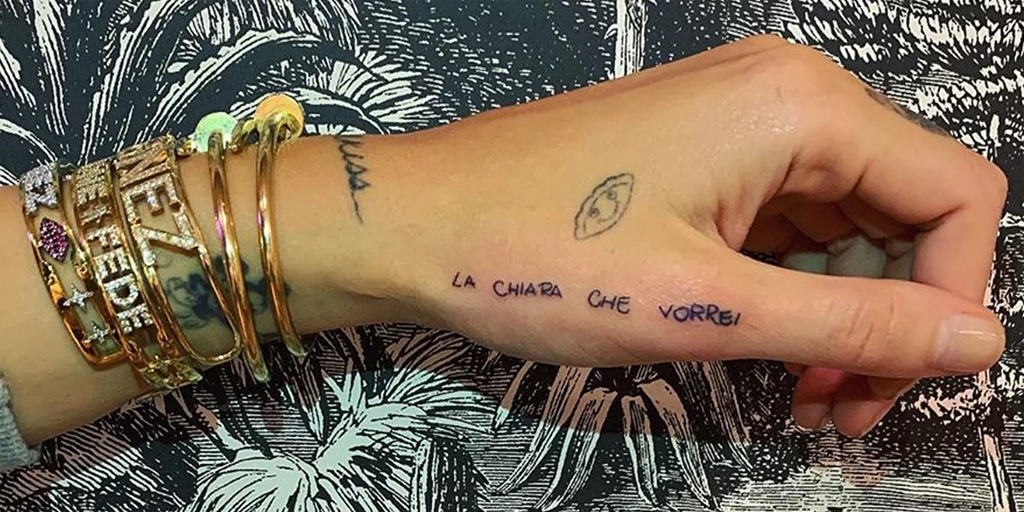Vittoria Ceretti, an Italian supermodel, is now so famous. Vittoria’s stunning beauty and ‘Eurocentric’ modeling style have made her a star. The media have targeted her due to her involvement with Hollywood actor Leonardo DiCaprio. It has incited media activity. People have paid attention to their romantic affairs. DiCaprio has engaged in high-profile relationships. Even more important, Vittoria is a rookie.
Some people have caught them at some of the best places that people can visit. This has sparked curiosity about their relationship and if they’re a couple. Again, like most of his other relationships, they had an age gap that drew criticism. This has created a lot of response from the public. Vittoria’s rise in fashion and media, plus her link to a Hollywood prizefighter, has made her the talk of the town. Who is this exquisite beauty? How did she get near one of the world’s most eligible bachelors?
Vittoria Ceretti’s Early Life and Backgrounds

Vittoria Ceretti is a fashion star. Her beauty and poise impressed the world. She understood that her fashion model career involved advertisements and runway shows. A small-town girl in Italy left home. She became a fashion model, thanks to a childhood passion. Alright, let me give you the lowdown of Vittoria’s background to see how she steps up as one of the world’s brightest stars.
Where She Was Born and Raised
Vittoria, the first name which has an Italian origin, was born on June 7, 1998, in Brescia, a city in the north of Italy. That is the main reason why she was born in the middle of this wonderful land. She did not enjoy a gypsy styled childhood. Instead, she had a simple Italian childhood, as many of her past stories suggest. The girl grew up here in Brescia, surrounded by a beautiful climate and a gorgeous view. But it’s a long way from the catwalks of New York, Milan, London, and Paris, as the world would later know her.
Family Background and Upbringing
Vittoria’s close-knit family always supported her dreams as she grew up. Her parents played a key role in encouraging her dreams. They nurtured her creative interests from a young age. People know little about her family’s personal life. But it’s clear, their support gave her the confidence to pursue modeling.
Her Journey Into the World of Modeling
Vittoria had an enviable, early introduction to modeling. 14 years of age she joined the 2012 Elite Model Look competition. The event is one of the biggest scouting events in the industry to date. They didn’t get the prize, but they got the attention of the two biggest advertising agencies. Shortly after this, she began to work as a professional. She owes her success to her beauty and talent on the catwalk. At 16, Vittoria was walking the runway for top fashion designers worldwide.
Vittoria Ceretti in the Fashion Industry

Vittoria Ceretti’s rise from a girl in Brescia to a supermodel is a story of ambition and talent. It shows her strong presence. Vittoria’s beauty and confidence on the runway made her a fashion icon. Her rapid rise has made her a muse for luxury brands. It has also made her a key figure in modern fashion.
How She Rose to Prominence as a Supermodel
At 14, Vittoria had a breakthrough in the Elite Model Look competition. Her career experienced rapid success. Her high cheekbones, almond-shaped eyes, and tall frame caught top fashion houses. They sought her for both runway and editorial work. Her strong, graceful presence let her blend high fashion with commercial work. She has gone from a rising star to a fashion staple. She now represents global brands and walks the most prestigious runways.
Major Modeling Gigs
Vittoria’s portfolio shows her work with top fashion brands. It is impressive. Chanel, Dolce & Gabbana, Prada and other luxury brands are her regular customers. So do Valentino and Fendi. In 2017, she is one of the rare models who had the honor of walking on the Chanel Haute couture show. This made her to cement her place as a high-fashion model. She has starred in top TV ads for Louis Vuitton, Alexander McQueen, and Versace. Besides the catwalk shows, this made her a world ambassador for premium fashion.
Vittoria’s Distinctive Style and Personality
Vittoria Ceretti is not a beauty. She has a unique take on fashion and strong values as a public figure. In a talented field, it’s Vittoria’s unique style that sets her apart. It makes her one of the most influential models of her generation. Vittoria’s modern style and quiet, impactful activism show her elegance and depth. Let’s explore what sets her apart and how her style and values contribute to her public persona.
What Sets Her Apart as a Model and Public Figure
Vittoria’s versatility is one of her strongest assets. Many people know models for their signature looks. She can adapt to various styles, from avant-garde couture to minimalist street fashion. Her skill at conveying moods makes her a favorite among designers and photographers. Off the runway, Vittoria is quiet but confident. She is elegant. It lets her connect with audiences in a genuine way. Her understated grace sets her apart from other models. It gives her an approachable yet glamorous appeal.
Vittoria and Leonardo DiCaprio: How Did They Meet?

Leonardo DiCaprio’s relationship with Vittoria Ceretti has generated buzz. It’s due to DiCaprio’s history with high-profile models and Vittoria’s past. Before meeting the Hollywood star, Vittoria had a husband. That chapter and her rising fashion career add layers to her story. Let’s explore how Vittoria and Leonardo met, and what led to their unexpected romance.
Vittoria’s Previous Marriage and Divorce
Before she got involved with DiCaprio, Italian DJ Matteo Milleri married Vittoria. He is a member of the popular electronic duo, Tale Of Us. The couple wed in 2020, during the pandemic. They kept their nuptials private and intimate. After a few years, their relationship ended. They divorced in 2023 with little public attention. This change was a turning point for Vittoria. She focused more on her career and personal growth. After her divorce, Vittoria made waves in fashion. She attended major events and walked runways for iconic designers. It was at one of these elite gatherings, at Paris Fashion Week or Cannes. People believe that she met Leonardo DiCaprio there. They both frequent the same luxurious social scenes. Mutual friends in fashion and film likely introduced them.
The Spark: From Friendship to Romance
After their introduction, people saw them together at several private events. At first, they thought their relationship was casual. Vittoria was fresh out of her marriage. But, as they spent more time together, rumors of a romance grew. Their chemistry transformed into a more serious connection in a short time.
The Striking Age Difference
Many discuss the age gap in Leonardo DiCaprio’s and Vittoria Ceretti’s relationship. Leonardo, 48, and Vittoria, 25, have a 23-year age gap. It has drawn public attention and sparked debate. DiCaprio’s history of dating much younger women has sparked debate. Critics question if it reflects deeper social issues.
Public Opinion and Media Portrayal
The media have highlighted the age gap. Some outlets see it as another chapter in DiCaprio’s well-documented dating life. On social media, people have divided opinions. Some fans celebrate the couple for their success and compatibility. Others criticize the age difference, saying it supports outdated views on relationships.
How the Couple Has Handled the Attention
Despite the scrutiny, neither Leonardo nor Vittoria has addressed the age debate. Instead, they are still seen together at high-profile events. They seem unfazed by the media attention. The couple has maintained a private relationship. They focus on their careers. This has shown resilience to the criticism. They let their bond speak for itself, avoiding the public debate about their romance.
What’s Next for Vittoria Ceretti?

Vittoria Ceretti is a top model in fashion. Her relationship with Leonardo DiCaprio has made her even more famous. With her fame growing, many wonder how this romance will affect her career and influence. With her success in modeling and plans beyond fashion, Vittoria’s future looks bright.
Impact of Her Relationship on Her Career and Public Image
Vittoria was already known in fashion. But, her relationship with Leonardo DiCaprio has brought her more media attention. This could lead to more chances in Hollywood, film deals, and brand partnerships. But, public scrutiny comes with the territory. Vittoria will probably face more media pressure. Balancing this high-profile relationship with her credibility as a model could be hard. But, her poise and professionalism suggest she can handle the spotlight. Vittoria is a runway favorite. She has worked with top designers like Chanel, Dolce & Gabbana, and Prada. She’ll likely continue to dominate the catwalks and top campaigns. Beyond modeling, Vittoria may explore fashion, beauty, or film. She wants to follow models who have made a successful transition to entertainment. Her growing fame and industry connections put her in a prime position to expand her horizons.
Conclusion
Vittoria Ceretti is a rising star in fashion. Her life as a public figure has drawn much attention. Her relationship with Leonardo DiCaprio has put her in the media spotlight. But her talent, professionalism, and style make her a standout supermodel. As she advances in her career and fame, Vittoria’s future looks bright. Her success on the runway and beyond will leave a mark on fashion and pop culture.

As a versatile and creative content writer, I craft compelling narratives that captivate and engage readers. With a keen eye for detail and a passion for storytelling, I transform ideas into impactful content. Clients choose me for my ability to understand their vision, deliver high-quality work on time, and provide a unique voice that resonates with their audience.











































